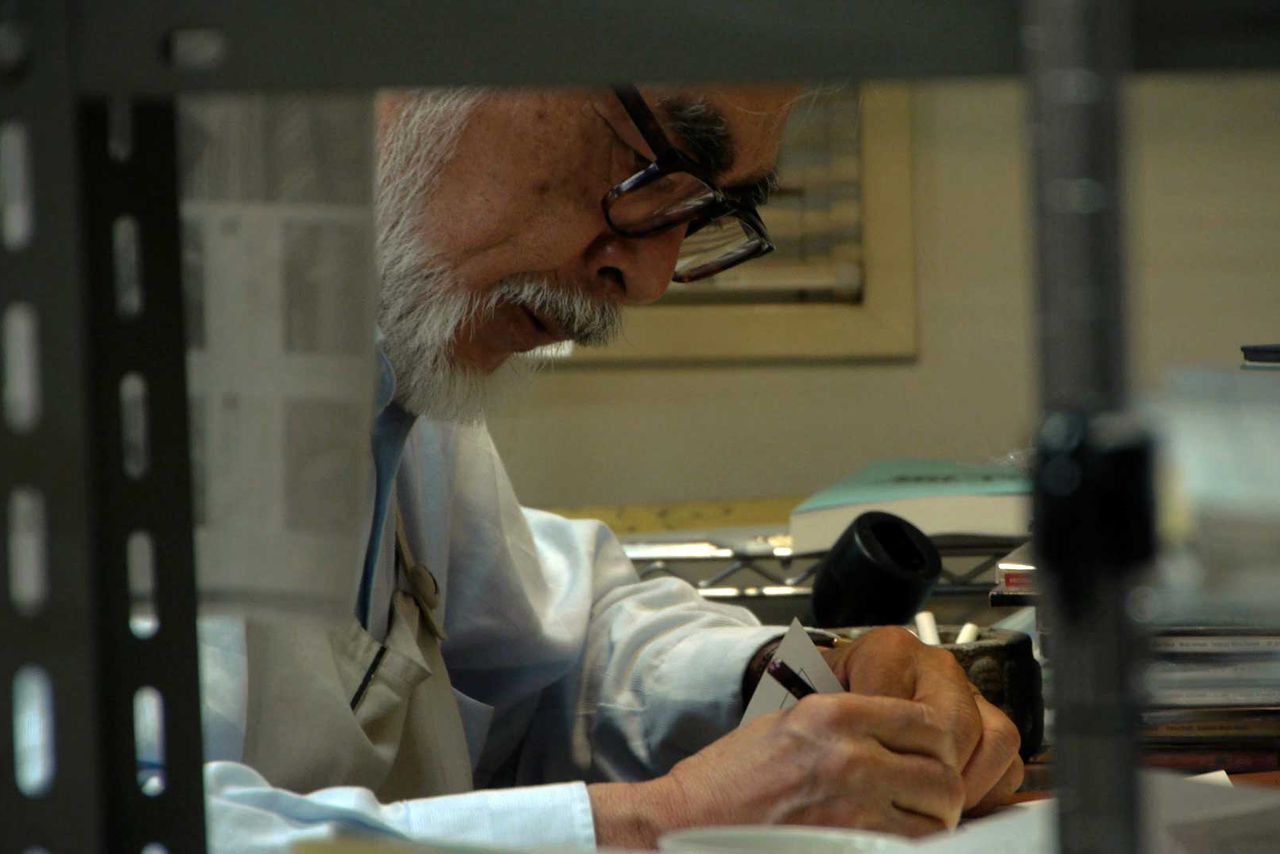By Chlotrudis Independent Film Society
Rating: 3.5 cats
Director: Mami Sunada

Original language title: Yume to kyôki no ôkoku
Country: japan
Year: 2014
Running time: 118
IMDB: http://www.imdb.com/title/tt3204392/combined
Jason says: “THE KINGDOM OF DREAMS AND MADNESS is sometimes described as ‘a year in the life of Studio Ghibli’, and one which is potentially its last year as an active production house. Many fans will likely be fascinated to watch renowned director Hayao Miyazaki work on his final film, although the documentary will give them more access than insight.
“That’s especially true for those who are most likely to drawn to Mami Sunada’s picture – they already know that Hayao Miyazaki creates painted storyboards for his films rather than a conventional screenplay, or that longtime producer Toshio Suzuki hired Miyazaki to create the manga that eventually became NAUSICAÄ IN THE VALLEY OF THE WIND while editing an animation magazine. They know the ins and outs of creating traditional animation, even if they are sometimes a bit taken aback at just how painstaking it is.
“The access is impressive, though – not quite total, but Miyazaki and Suzuki certainly appear to allow Sunada plenty of freedom to look over their shoulders. Miyazaki, in particular, becomes a subject that merits the viewer’s attention, charismatic and folksy but often expressing a pessimistic view of the world. It’s an intriguing portrait, although one likely to be very much influenced by what the audience brings to it. Does this joviality serve to mask how he can be the sort of genius that can be very difficult to deal with, and is it done deliberately, especially with Sunada always being around?
“That Sunada does not dig particularly deep into that question is fine; it’s interesting for the audience to ponder. It’s something where there’s actually some time spent and a full look given. That’s in contrast to a number of other things that get brought up only to not amount to much: While we get to watch plenty of moments from Miyazaki’s production of THE WIND RISES, there are plenty of times when they mention Isao Takahata’s parallel production of THE TALE OF THE PRINCESS KAGUYA, and how he doesn’t even seem to be trying to finish it even though there’s a producer assigned to be watching him 24/7, but there’s never any sort of resolution to it beyond the fact that PRINCESS KAGUYA did eventually get finished and released. Similarly, there is talk about how Suzuki is particularly brilliant as a producer, building relationships, and otherwise handling the business end of Ghibli, but any concrete examples seem to be off-screen (or, perhaps, involve social and business structures unique to Japan that Americans such as myself won’t spot).
“There are a lot of scenes that contain a lot of charm – everything with Hideaki Anno, a director and animator (described as a ‘former non-actor’) brought in to voice Jiro Horikoshi, the main character of the film, for instance. Though Sunada does not dig deep into the process, some bits, like Miyazaki miming movements with a stopwatch in hand to figure out how long a given shot should run, are parts of the process that even long-time animation fans might not have seen portrayed before. A picture does eventually form around how Miyazaki and Ghibli in general seem to improvise quite a bit in a medium that seems to require rigid planning.
“I must admit, I wish Sunada had dug in deeper, talked about the process, shown us enough of Takahata to compare how he and Miyazaki worked. A title like ‘The Kingdom of Dreams and Madness’ raises hopes for a look beneath the surface that this film seldom gives us. Ghibli and Miyazaki have more fascinating surfaces than most, but one would hope that a film based upon a year of observation would tell us more. 3.5 cats
“Seen 2 January 2014 at the Brattle Theatre (first-run, DCP)”
